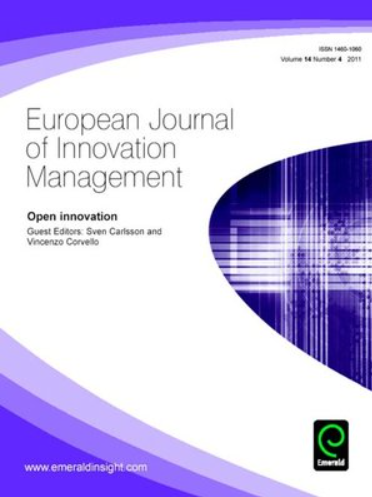How do patent thickets affect financial performance: a three-way interaction model
IF 5.7
3区 管理学
Q1 BUSINESS
引用次数: 0
Abstract
Purpose Firms may suffer differently from the patent thickets in a particular technology field. This paper explores how patent thickets affect the financial performance of firms with different patent propensities and technological leadership. Design/methodology/approach From the perspective of patent strategy, the authors study how patent propensity, the possibility that a firm applies for patents, affects the patent thickets and financial performance. Additionally, this paper uses patent stock to measure technological leadership, the degree to which a firm can develop, maintain and enhance technology and product innovation, to study the impact of patent propensity on firms. A three-way interaction model is used to explore the relationship among patent thickets, patent propensity, technological leadership and financial performance based on an unbalanced panel of 69 Chinese telecommunication equipment firms from 2008 to 2019. Findings The authors find that patent propensity positively moderates patent thickets and financial performance. Notably, technological leadership negatively moderates the moderating effect of patent propensity. Originality/value This paper enriches the heterogeneous literature of patent thickets and financial performance. It sheds light on the fact that firms with different technological leadership may use different patent strategies to cut through patent thickets.专利丛林如何影响财务绩效:一个三方互动模型
在一个特定的技术领域,企业可能会受到专利丛林的不同影响。本文探讨了专利丛林如何影响具有不同专利倾向和技术领先地位的企业的财务绩效。本文从专利战略的角度出发,研究了专利倾向(即企业申请专利的可能性)对专利丛林和财务绩效的影响。此外,本文还利用专利存量来衡量技术领先度,即企业能够发展、保持和增强技术和产品创新的程度,以研究专利倾向对企业的影响。基于2008 - 2019年中国69家电信设备企业的不平衡面板,采用三向交互模型探讨了专利丛、专利倾向、技术领先和财务绩效之间的关系。研究发现,专利倾向对专利数量和财务绩效具有正向调节作用。值得注意的是,技术领导负向调节专利倾向的调节作用。本文丰富了专利丛林与财务绩效的异质文献。它揭示了一个事实,即拥有不同技术领先地位的公司可能会使用不同的专利策略来突破专利丛林。
本文章由计算机程序翻译,如有差异,请以英文原文为准。
求助全文
约1分钟内获得全文
求助全文
来源期刊
CiteScore
10.40
自引率
17.60%
发文量
107
期刊介绍:
The subject of innovation is receiving increased interest both from companies because of their increased awareness of the impact of innovation in determining market success and also from the research community. Academics are increasingly beginning to place innovation as a priority area in their research agenda. This impetus has been partly fuelled by the Economic & Social Research Council (ESRC) who have designated innovation as one of nine research areas in their research initiative schemes.

 求助内容:
求助内容: 应助结果提醒方式:
应助结果提醒方式:


